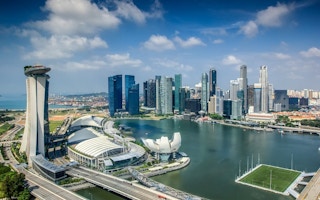Cities would make up one of three major themes guiding how the U. N.’s new Sustainable Development Goals (SDGs) are monitored, under a high-level plan that would go before the U. N. General Assembly for approval. If approved, the cities theme would be in place for all of 2018.
After last year’s adoption of the SDGs — a 15-year framework aiming to end poverty and strengthen sustainability efforts worldwide — the obvious question became how to monitor progress on the sprawling agenda. So, as part of the comprehensive institutional architecture created around the SDGs, national governments agreed to meet each July as part of a review process called the High-Level Political Forum (HLPF).
The idea is for the global development community to come together in a combination trade show and diplomatic conference for 10 days every year.
There, they will highlight best practices in implementing and monitoring the SDGs — from new data-collecting technology that allows for tracking at a granular level to innovative civic-engagement strategies to spread the word about the goals.
Countries will submit reports on their progress as part of a collective peer review. At the end of the 10 days, ministers will come together to reach a diplomatic statement designed to advance the global consensus that achieving the goals should be a priority for each national government.
Last year’s HLPF was hardly able to begin its functions, as the 17 goals and 169 targets that make up the SDGs had not been formally inked.
This year’s HLPF, which runs 11-20 July, will at least have an official set of SDGs as a reference; but the event will remain something of a dress rehearsal, given that countries will have had less than a year to work formally toward implementation.
Nevertheless, 22 countries have voluntarily submitted to review their progress. A list of those countries, along with initial reports that they have offered for the process, is available here.
Over the coming year, observers expect the HLPF to be fleshed out into the form it will probably take for the remainder of the SDGs’ life cycle, until 2030.
Diplomats are currently negotiating a U. N. General Assembly resolution that would structure the next three years’ of these sessions — and one of those three revolves specifically around cities.
“
Civil society groups are lobbying for the HLPF resolution to allow for more in-depth participation of non-governmental groups in monitoring and reporting on the SDGs.
In a draft released 6 May, the co-facilitators of this process, Belize and Denmark, proposed the 2018 overall theme of the HLPF as “Making cities sustainable and building productive capacities.” A final draft from 26 May again includes this proposal.
This development would bode well for those who see this year’s Habitat III summit on housing and urban development as a natural fit for action on implementing the SDGs.The conference, slated for October in Quito, Ecuador, is to adopt the New Urban Agenda, 20-year guidelines on urbanization.
Currently, U. N. diplomats are negotiating the provisions of the draft New Urban Agenda, as well, and that includes the typically controversial question of how to monitor progress once such a voluntary agreement is adopted. Some have suggested that the HLPF could provide an existing forum in which to accomplish that goal, and a dedicated cities theme in 2018 would bolster that argument.
Meanwhile, civil society groups are lobbying for the HLPF resolution to allow for more in-depth participation of non-governmental groups in monitoring and reporting on the SDGs.
In an open letter last week signed by over 370 groups, they express concern that if governments are left to their own devices to inform their fellow U. N. members about progress toward development goals, they will put a positive spin on the results. NGOs, advocates say, provide the best hedge to ensure accountability and independent verification.
This story was originally published here. Citiscope is a nonprofit news outlet that covers innovations in cities around the world. More at Citiscope.org

















